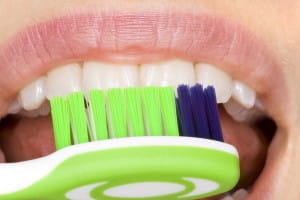 The uncomfortable feeling of plaque building and sticking to your teeth should prompt you to brush your teeth often. However, the most disturbing thing about dental plaque isn’t how it feels, but rather what it hides—specifically, over 600 different kinds of oral bacteria. A few of these strains are particularly worrisome because they can produce harmful substances that lead to tooth decay and gum disease, both of which could lead to tooth loss, in extreme cases. Understanding plaque and oral bacteria, and the signs that they have become a threat, will help you better protect your smile from their destructive influences.
The uncomfortable feeling of plaque building and sticking to your teeth should prompt you to brush your teeth often. However, the most disturbing thing about dental plaque isn’t how it feels, but rather what it hides—specifically, over 600 different kinds of oral bacteria. A few of these strains are particularly worrisome because they can produce harmful substances that lead to tooth decay and gum disease, both of which could lead to tooth loss, in extreme cases. Understanding plaque and oral bacteria, and the signs that they have become a threat, will help you better protect your smile from their destructive influences.
S. Mutans and Tooth Decay
Candy isn’t the only thing that can lead to cavities – so can anything with high amounts of sugar, or other fermentable carbohydrates (like starch). Sugar and carbs can feed the bacteria, Streptococcus mutans, which convert the substances into organic acids. As the germs cling to your teeth from the protection of plaque, they can secrete the acid onto your teeth’s surfaces, eroding the protective layer of enamel that surrounds them. The acid attacks that S. mutans generate can lead to increasing tooth sensitivity as the enamel wears away, and eventually, a cavity will form as bacteria slip past enamel and infect your tooth.
P. Gingivalis and Gum Disease
While tooth decay is the most common dental health issue, gum disease is perhaps more destructive, and is the leading cause of adult tooth loss. The leading mechanism behind gum disease’s threat is the rampant inflammation that accompanies it. Unchecked swelling destroys your gum tissues, and eventually the jawbone underneath, until they can no longer support all of your teeth. The bacteria, Porphyromonas gingivalis, instigate inflammation by tricking your immune system, leading to gum disease and potentially increasing your risk of other inflammatory diseases (like heart disease).







